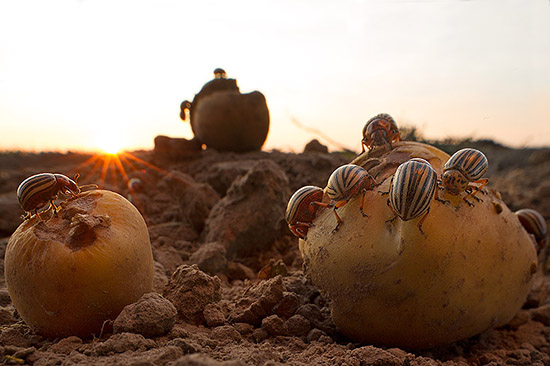By the begin of august 2015, my parents informed me that they observed hundreds of Potato Beetles, Leptinotarsa decemlineata, crossing a street in Afsnee, near my hometown of Gent.
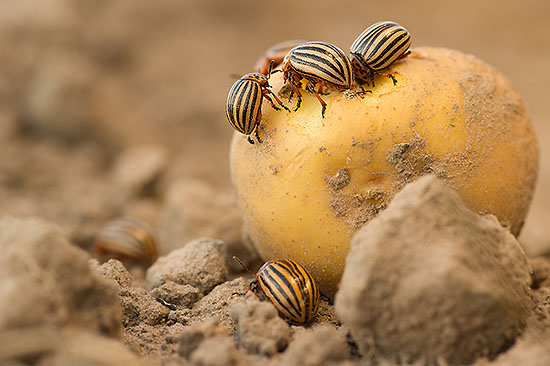
I was very intrigued for two reasons. I had never come across a plague of Potato Beetles so far: from time to time I had ran into a few single individuals, but never more… Moreover the Potato Beetle is an attractive and quite large Leaf Beetle species. For several years I dreamt of documenting a large amount of Potato Beetles, and illustrating so the plague proportions of some beetle species. So the next day, on a sunny evening, I decided to visit the spot. I was soon struck by the same phenomenon: the road was covered for about two hundred metres long with dead and alive Potato beetles. The Beetles seemed to walk all in the same direction, away from some fields and later on dispersing from the road towards some large gardens and a parcel with brushwood. Very nice to observe the impressive exodus, but impossible to illustrate with photographs the phenomenon: although very numerous over a large surface, there were never more than about ten individually walking beetles on per square meter. No way to get a good image from several 1cm, tiny beetles which are separated by tens of centimetres from each other. I expected that a potato field had very recently been harvested and that the foliage had been removed. The beetles were probably forced to leave the field, due to the vanishing of their food source. So I decided to walk in the opposite direction from the beetles. Five minutes later, bingo! On the edge of a harvested potato field, there were still some spots where several dozens of Potato beetles gathered around some unharvested potatoes and left over foliage remains. The photography could begin and moreover the evening light was still very beautiful. Under here a first image illustrating the large number of potato beetles.
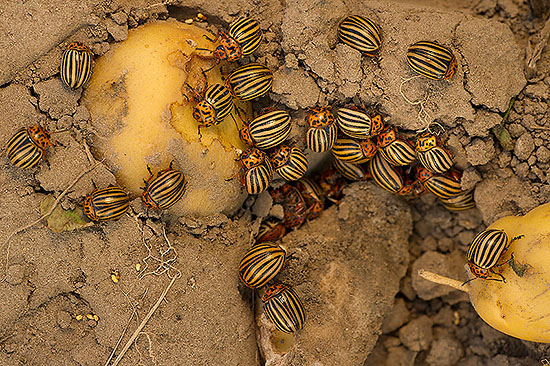
I was surprised that the adult beetles also actively fed on the potatoes: all the unharvested potatoes were covered with Potato Beetles in small or larger numbers. It might of course have been due to the lack of other food sources (foliage). Undere here, one can see the adults feeding on the potatoes.
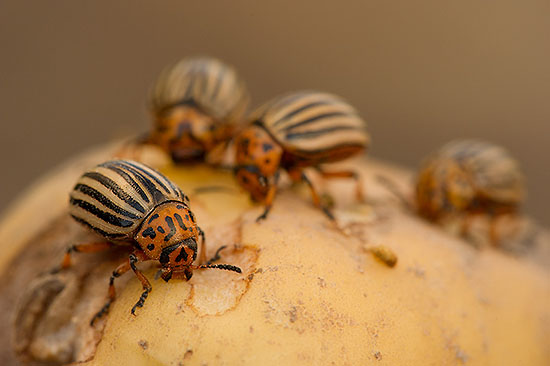
General history from pest species.
It is well known from the insect world that species can lead during some years to overwhelming plagues, and hence destroying gigantic surfaces of crops. Well known examples from pest species, are the Desert Locus pests form North Africa, which were already described in the Bible. Tiny Bark Beetles can destroy thousands of hectares of forest. The overwhelming power of tiny bugs occurring in large numbers has been since long known, observed and fought against by mankind.
The described examples are natural phenomenon’s peaking in years with particularly favourable circumstances for the pest species. However when ravaged by a pest species, the modern monocultures which are ecologically less stable, will more easily lead to even larger catastrophes for the harvesting. A monoculture with one dominant spruce species planted over hundreds of hectares, is much more fragile for plagues then a mixed forest, with a rich and more natural structure.
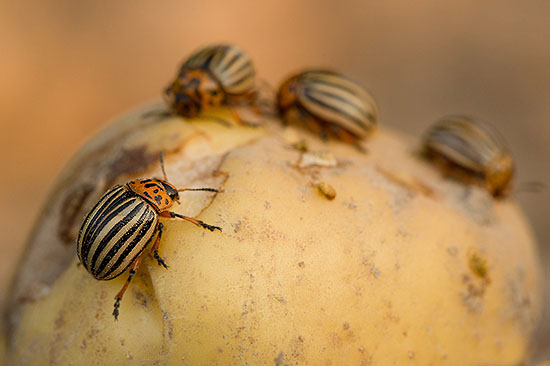
History from the Potato Beetle.
The Potato Beetle plague, is a good example of the introduction of two species by mankind, which has lead in the end to a much more threatening pest than the species ever was in its original natural habitat.
The native distribution from the Potato Beetle is presumably the Southwest from the USA (Colorado and Arizona) and the North of Mexico, where it feeds on members of the Solanaceae occurring in the desert scrub and natural dry grasslands.
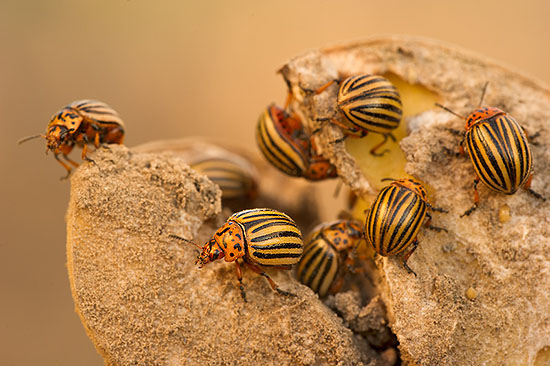
History of the potato
The origin of the potato is the Andean highlands in South America. Cultivation of potatoes in South America may go back 10,000 years. Sailors returning from the Andes to Spain with silver presumably brought maize and potatoes for their own food on the trip. Traces have been documented of the transport of potatoes travelling from the Canaries to Antwerp in 1567. The Spanish had an empire across Europe, and brought potatoes for their armies. Peasants along the way adopted the crop during the forthcoming years. In France and Germany government officials and noble landowners promoted the rapid conversion of fallow land into potato fields after 1750. The potato thus became an important staple crop in northern Europe.
When the Potato Beetle became a pest species
The Potato Beetle was accidently transported to Europe by boats during the 19the Century. In 1877, the first documented Colorado beetle reached Germany where it was eradicated. During or immediately following the First Wold War, it became established near USA military bases in Bordeaux and proceeded to spread by the beginning of World War Two to Belgium, the Netherlands and Spain. In his new environment, the beetle seemed to thrive on the potato fields. The population increased dramatically during and immediately following World War Two and spread eastward, and the beetle is now found over much of the continent. In particular during hot summers the species can become very numerous and cause a lot of damage to potatoes, but as well on tomatoes or eggplants.
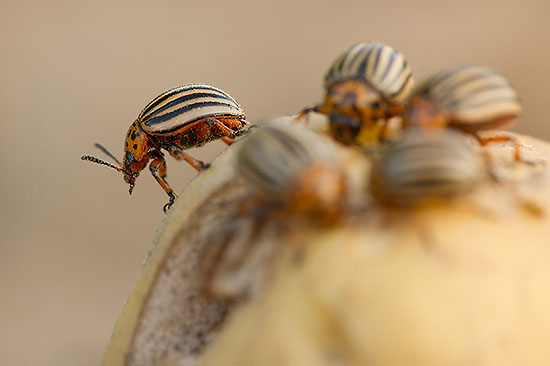
Life cycle of the Potato Beetle
Colorado potato beetle females can lay as many as 800 eggs, which are usually deposited in batches on the underside of host leaves. The adults lay their eggs during spring. The larvae feed on the leaves and progress through four distinct growth stages. The prepupae drop to the soil and burrow to a depth of several inches, then pupate. Depending on temperature, light-regime and host quality, the adults may emerge in a few weeks to continue the life cycle, or enter diapause and delay emergence until the next spring. They then return to their host plant to mate and feed. In some locations, three or more generations may occur each growing season.
Under here an image taken with a wide angle lens, in attempt to illustrate the harvested field seen through the eyes of the Potato Beetle. This is the last image I took on during this fascinating evening. With special thanks to my parents, Anne-Marie Despiegelaere and Robert Van Elegem, who gave me this wonderful tip!
